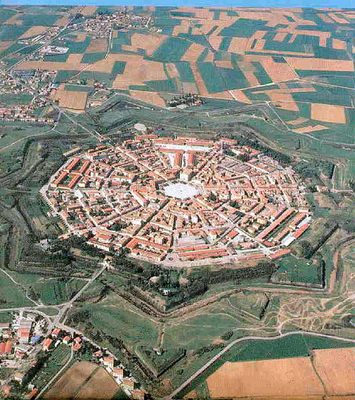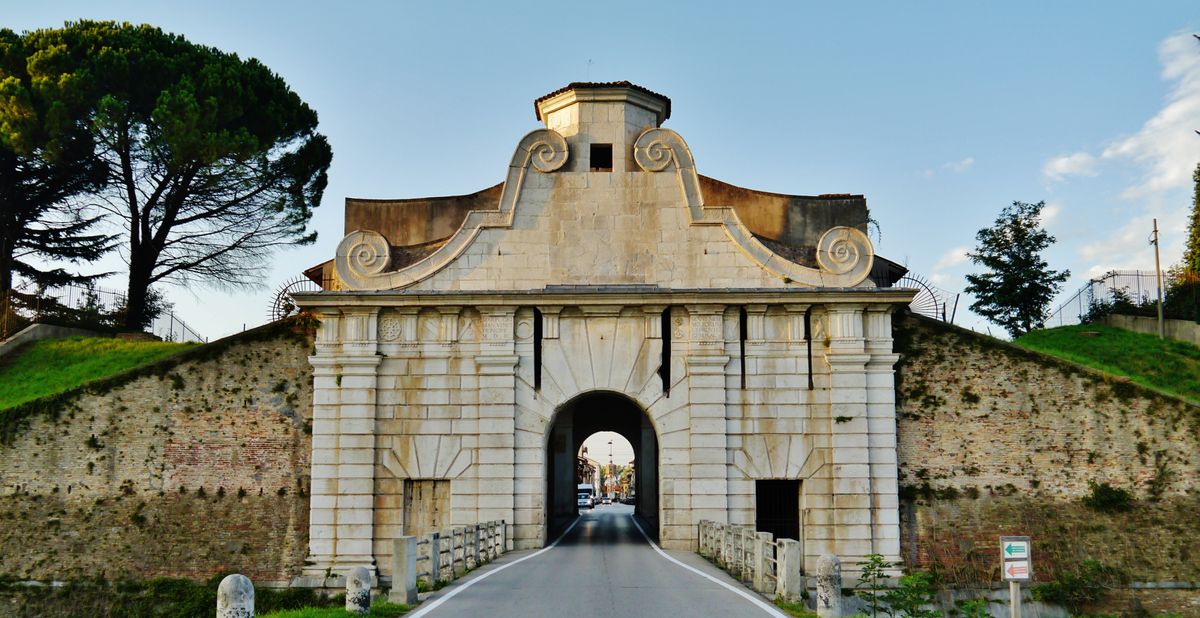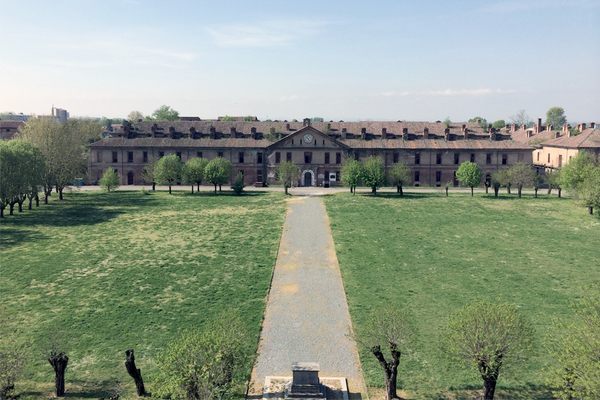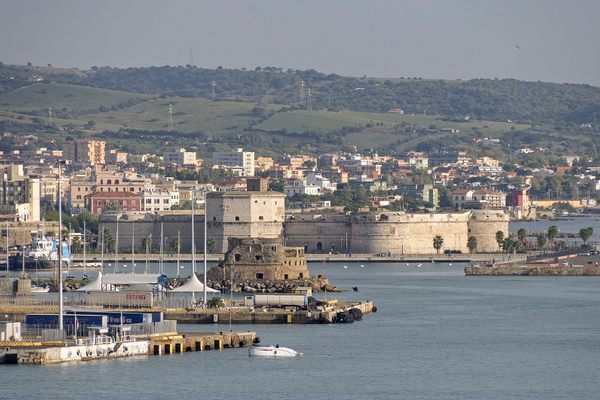About
During the 16th century the territory of Friuli was contested between the Republic of Venice and Austria. To protect against the Habsburgic menace and Ottoman raids, the Venetians decided to build a fortress in the middle of the territory, and they did it following the utopian model of the Renaissance ideal city.
The idea of a city perfectly geometric in shape and surrounded by walls was popular among philosophers, artists, and well-educated people of 16th-century Europe, and many representations of such a perfect town can be found in the art and literature of the time. So when the architects of the Republic of Venice were presented with the rare opportunity to build an entire town from scratch, they jumped at the chance to put the intellectual idea into practice.
The new town of Palma was founded on October 7, 1593, the anniversary of the Venetian win over Ottoman forces in the Battle of Lepanto some 20 years earlier. It was laid out in the shape of a nine-pointed star, with three nine-sided ring roads intersecting the streets radiating from the big main square in the center. The first set of walls was completed in 1623, while the second was built some decades later. The most external walls, the third ring, was built between 1806 and 1813 during the Napoleonic rule, when the town was renamed Palmanova, meaning "New Palma."
The fortress city survived many wars that reached the region in its over 400 years of history, and managed to retain its unique shape to the present day.
Related Tags
Know Before You Go
The above coordinates are for the perfectly hexagonal square at the center of town, Piazza Grande. There are also several 16th-century fortress buildings around the city worth seeing, and three monumental gates that allowed entrance to the city: Porta Udine, Porta Cividale, and Porta Aquileia. Stop off at the tourist office for more information. On the first weekend of September each year, the city puts on a historical reenactment of the beginning of the war of the Ottoman—Habsburg wars in 1615.
Flavors of Italy: Roman Carbonara, Florentine Steak & Venetian Cocktails
Savor local cuisine across Rome, Florence & Venice.
Book NowPublished
February 4, 2019











































